

Matt Campbell
2026 Hyundai Tucson Hybrid review
7 Hours Ago
The BMW XM is out to divide opinion – and on that front, it's an overachiever. It's not quite as successful on other fronts.
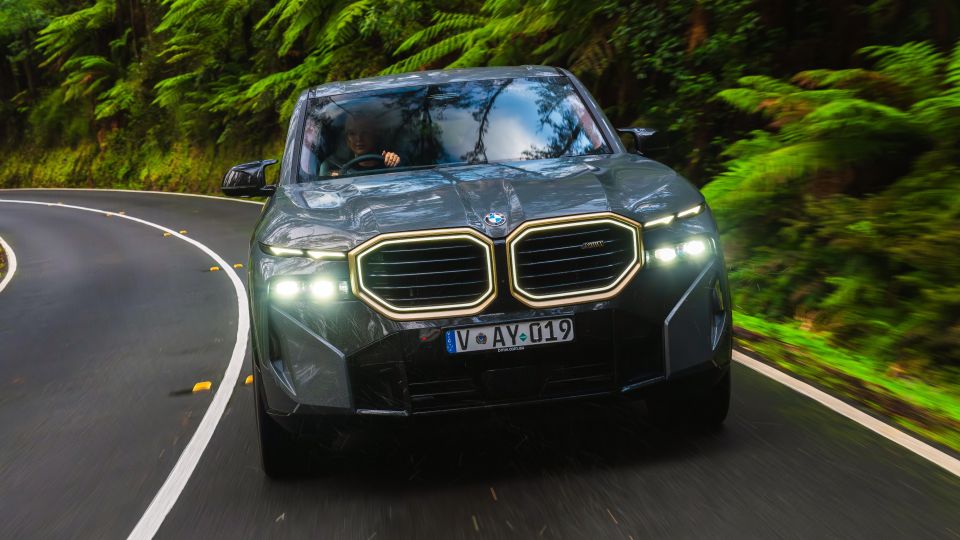
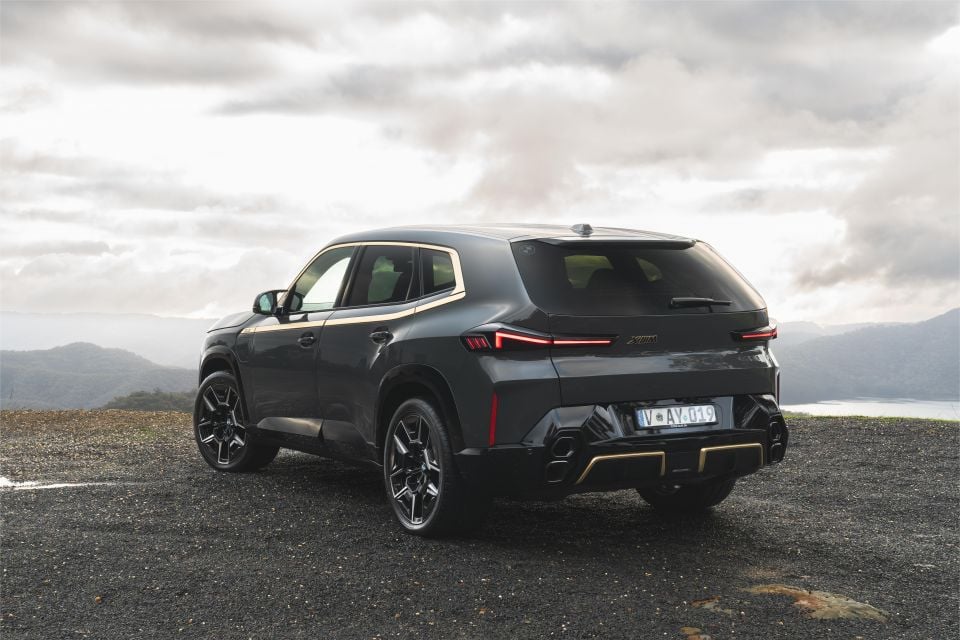

Quickly see how this car stacks up against its competition. Select any benchmark to see more details.
Where expert car reviews meet expert car buying – CarExpert gives you trusted advice, personalised service and real savings on your next new car.
You’re looking at the first dedicated BMW M car since the supercar that started it all, the M1.

And no, it’s not a reborn M1 – no matter how nicely we ask, BMW has consistently knocked back that idea.
Instead, the XM is an SUV that shares a chunk of its underpinnings with the X5, packing plug-in hybrid V8 power, a lounge-like interior, and a pugnacious exterior designed to be provocative. They’ve overachieved on that last point…
This is a challenging car on more than just an aesthetic level. It’s been tasked with taking on the Lamborghini Urus and wears the feted BMW M badge, so it needs to handle like a sports car on stilts instead of a lumbering barge.
But it’s also meant to go head-to-head with the Bentley Bentayga, which means it’ll need to offer an uber-luxurious interior and relaxed long-haul ride. Those traits aren’t mutually exclusive, but they’re challenging to balance.
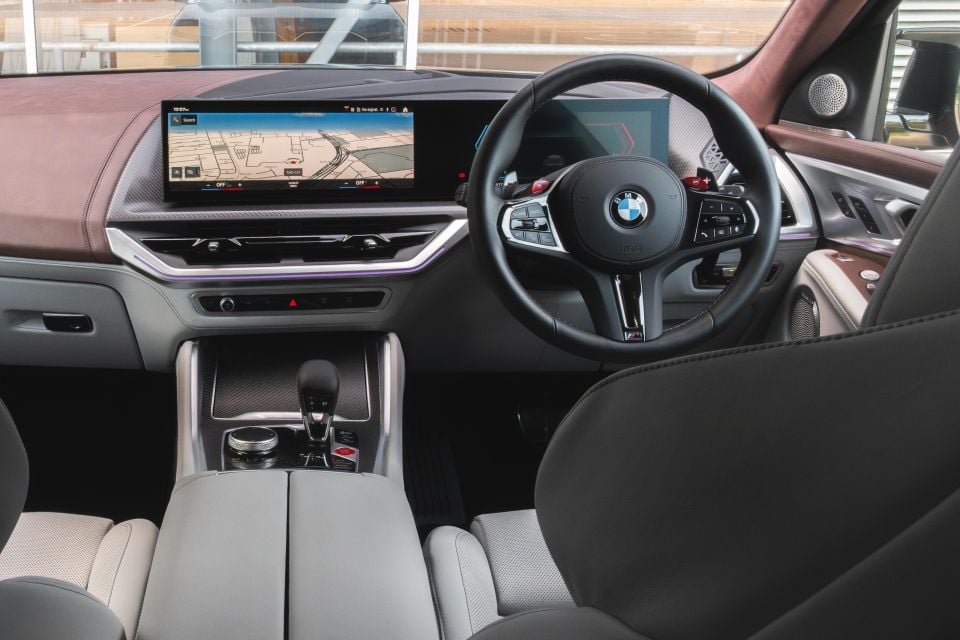
Even the powertrain is trying to do two things at once; blending an electric motor and substantial battery pack with a 4.4-litre twin-turbocharged V8 for eye-popping performance and tree-hugging efficiency.
Can this hulking hybrid be all things to all people?
There’s one price for the XM; even the optional bigger wheels and trim finishes are no-cost additions.
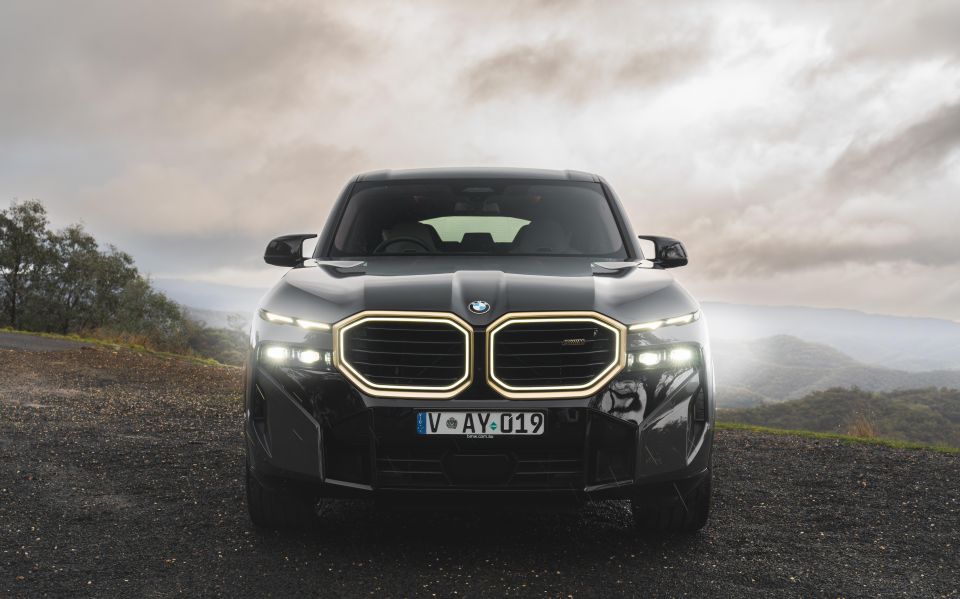
Unless you opt for a particularly out there paint finish, you’ll pay $302,200 before on-road costs for the regular XM.
That’s up $4300 on when the car was announced for Australia, although it’s significantly less than the $344,200 before on-roads you’ll pay for the XM Label Red.
It’s tough to give the XM a mark for value. On the one hand, it’s significantly cheaper than the Lamborghini Urus S ($409,744) or Bentley Bentayga V8 ($395,800).
On the other, it’s significantly more expensive than the faster X5 M Competition ($241,900).
Buy your new car without the stress. It's fast, simple and completely free.

Great service from Travis and team, second time I have used this business would not hesitate to recommend them to anyone
Craig C.
Purchased a Ford Ranger in Sunshine Coast, QLD
CarExpert helped Craig save thousands on his Ford Ranger, now let us save you on your next new car.
Find a dealThe outside of the XM is brutal and polarising; the inside is beautifully designed and finished.
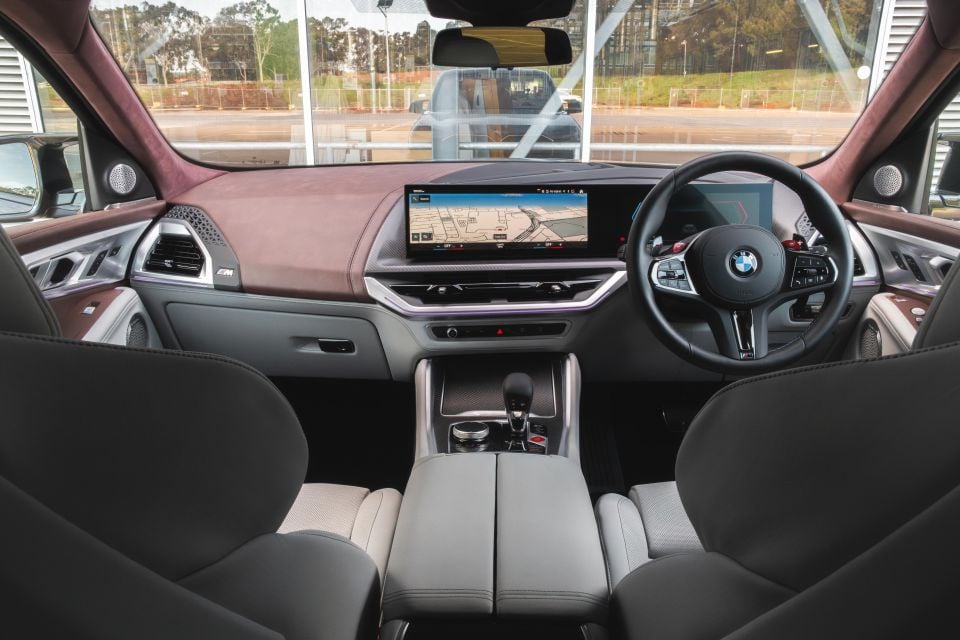
Although there are parts shared with the X5 and X7, it looks and feels bespoke thanks in no small part to the “vintage leather” dashboard trim fitted to our tester. It’s a unique look not really available anywhere else, and ensures no two XMs with the option will be quite the same.
The driver and passenger sit in supportive seats with plenty of bolstering, and the view of the road ahead is commanding. Hopping out of an M3 into the XM is like moving from the basement into the penthouse suite, for better and worse.
Everything you look at or touch feels high quality, from the oily-smooth air vent adjusters to the waxy leather seat trim, and the infotainment system is every bit as polished as elsewhere in the BMW range. It’s harder to navigate than before with the death of the dedicated climate controls, but it still has MBUX covered for usability.
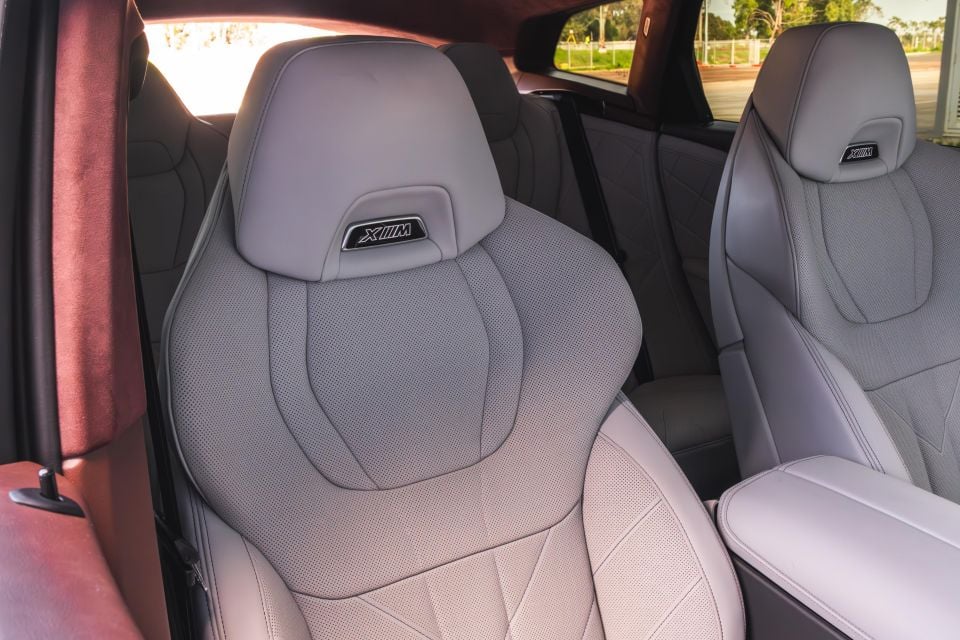

The stereo is a highlight. Some brands charge extra for their punchiest sound systems, but the Bowers and Wilkins setup in the XM is standard, and stunning. With thumping bass, exceptional clarity, and absolutely no distortion at high volume, it handles everything from Rage Against the Machine to Fred again.. without breaking a sweat.
BMW describes the front seats as the “front stage”, which makes the rear seats “backstage”.
They’ll certainly make the kids feel like rockstars. Although the XM is a similar size to an X5, it rides on a X7-aping wheelbase to free up more legroom – and it’s worked, with enough space for leggy adults to sit behind tall drivers with legroom to spare.
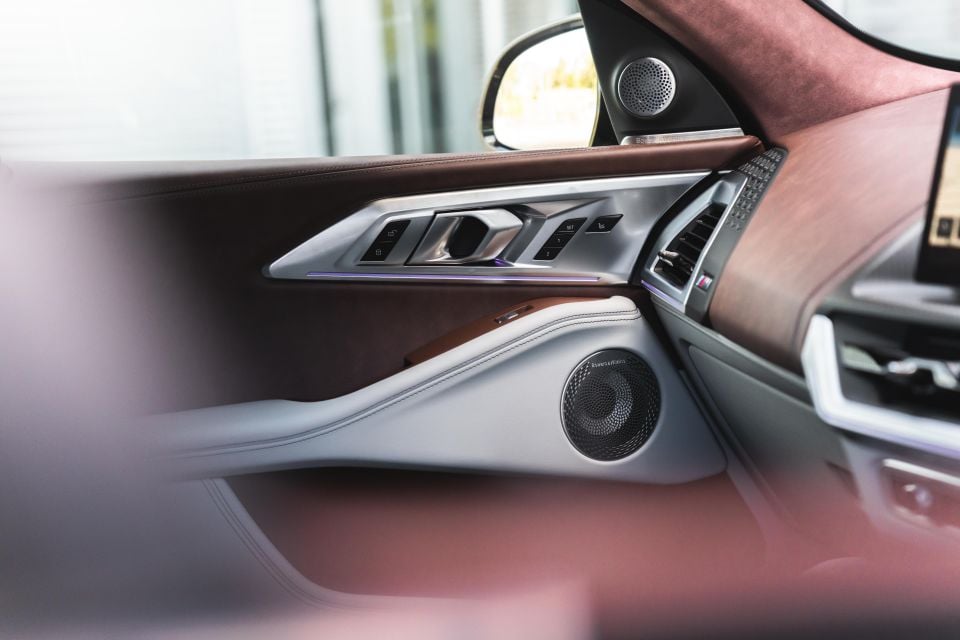
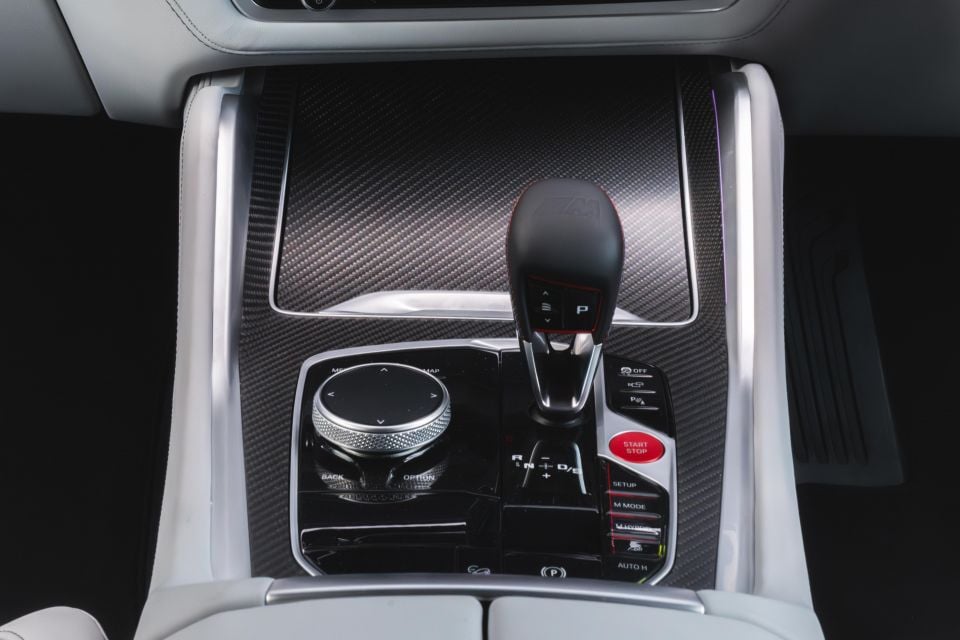
The seats are super plush, and the quilted trim wraps around from the seats onto the cladding over the wheel arches to create a lounge-like vibe back there. Forget the 7 Series, this is where you’ll want to recline… at least, at a standstill.
There are USB ports in the centre console and seat backs, rear air vents with dedicated climate controls, and luxe touches like M-branded pillows to elevate the experience, while the outboard seats are sculpted to hold passengers in place when the red mist descends up front.
If you want to lug kids around in style, there are ISOFIX points on the outboard rear seats and top-tether points on all three. You’ll easily get a child seat in behind a tall adult, although white leather might not be a sensible choice given how grubby kids can be.
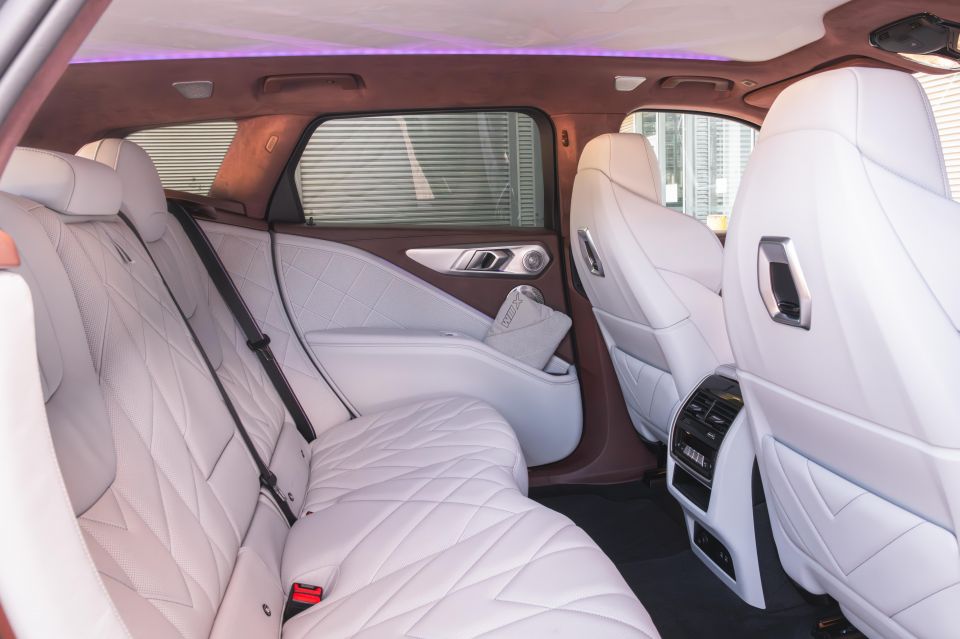
Although you get a middle seatbelt, the middle seat is the poor relation. It has a shorter base, and it’s narrow due to the bolstering for the outboard pews. It’s usable, but it’s not on a par with the other positions.
I can’t think of many M cars where the rear seat presentation is a highlight, but that’s the case here. With quite a rough ride, the XM doesn’t fully deliver on its promise as a luxury hauler on the move though.
Claimed boot space in the XM is 527 litres. There’s no loading lip, and the floor is finished with rubberised strips designed to hold slippery items in place if you’re driving hard.
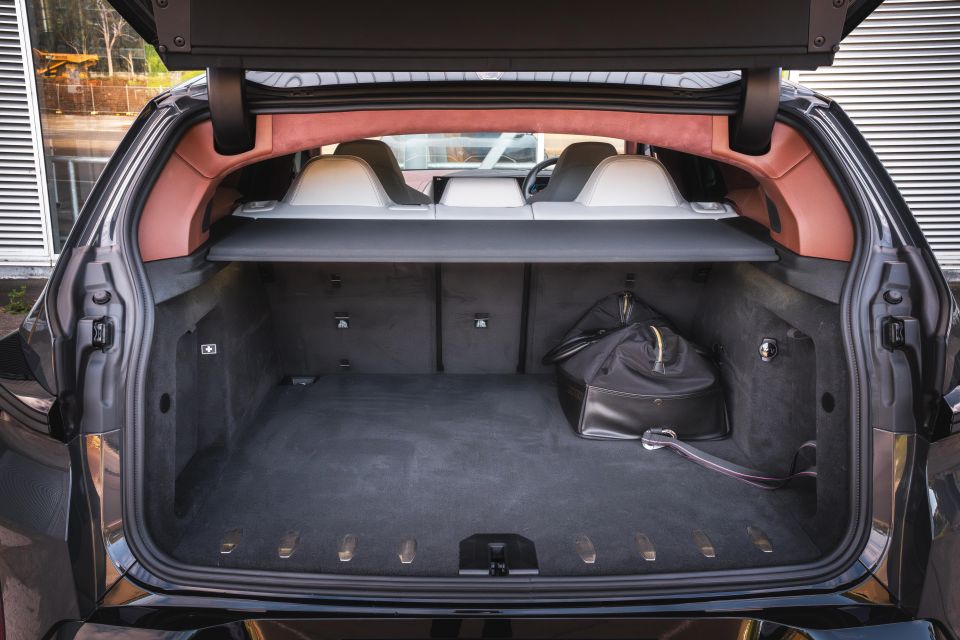
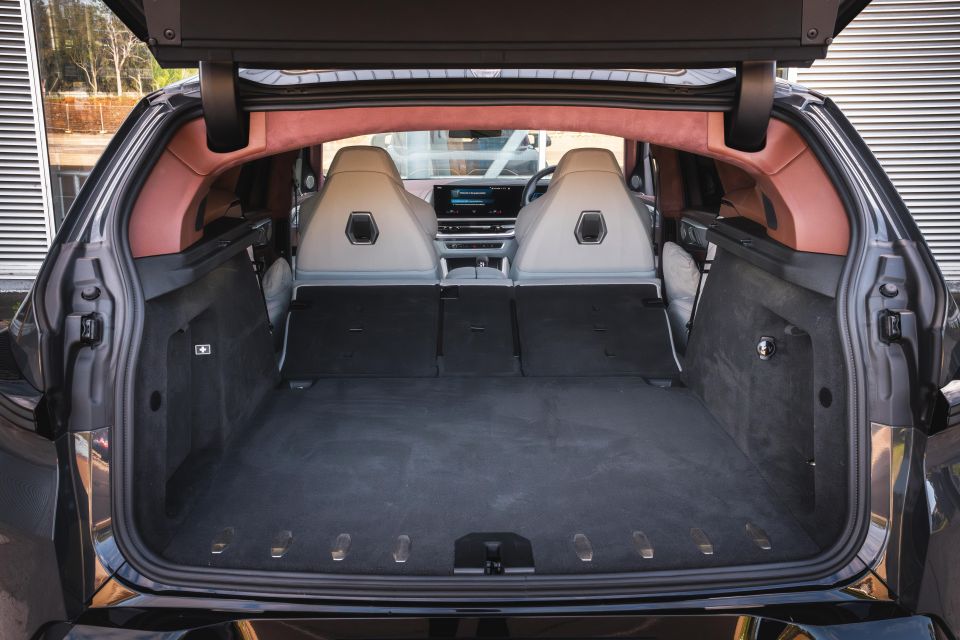
Beware though, the (very pretty) bag and charge cable included with the car is massive, and very heavy. It’s the equivalent of having a solid carry-on bag on board, which is something to be considered if you want to pack in a carload of people and their stuff, or bulky items like a pram.
The one-piece luggage cover is also an inelegant solution compared to a conventional rollaway luggage cover.
Powering the BMW XM is a 4.4-litre twin-turbocharged V8 plug-in hybrid powertrain mating a 145kW/280Nm electric motor and 360kW/650Nm petrol engine for total system outputs of 480kW and 800Nm.
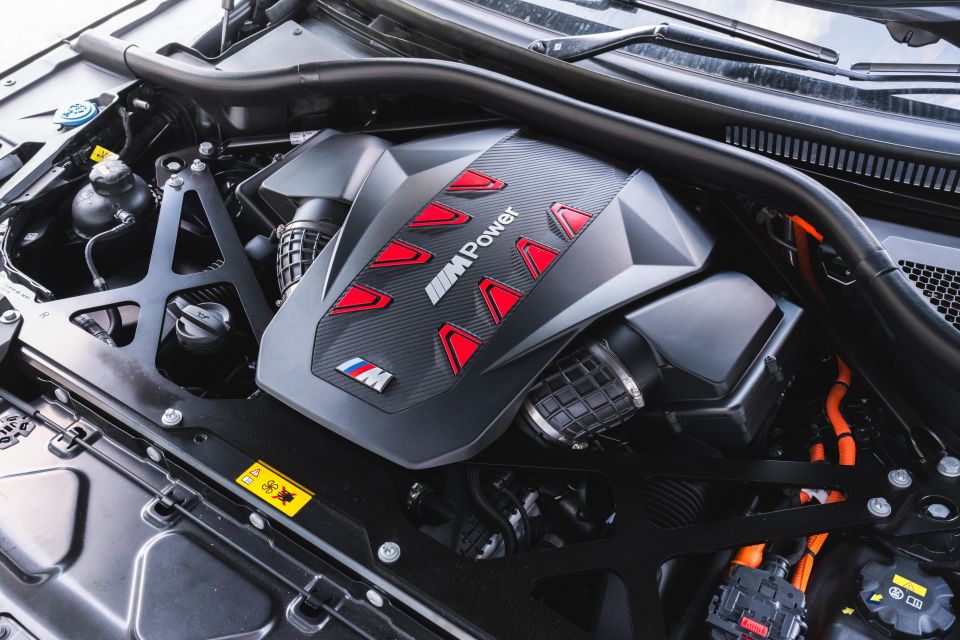
The XM has a 25.7kWh battery, with an electric-only range of 82-88km on the WLTP cycle. It can be charged on AC power at up to 7.4kW.
The electric motor is integrated into the eight-speed automatic transmission. Power in the XM is sent to the road via an M xDrive rear-biased all-wheel drive system.
BMW claims a 0-100km/h time of 4.3 seconds.
There is a lot to unpack about how the XM drives, because there are so many drive modes. The internal-combustion M range is already incredibly customisable, but the addition of a plug-in hybrid system opens more new doors.
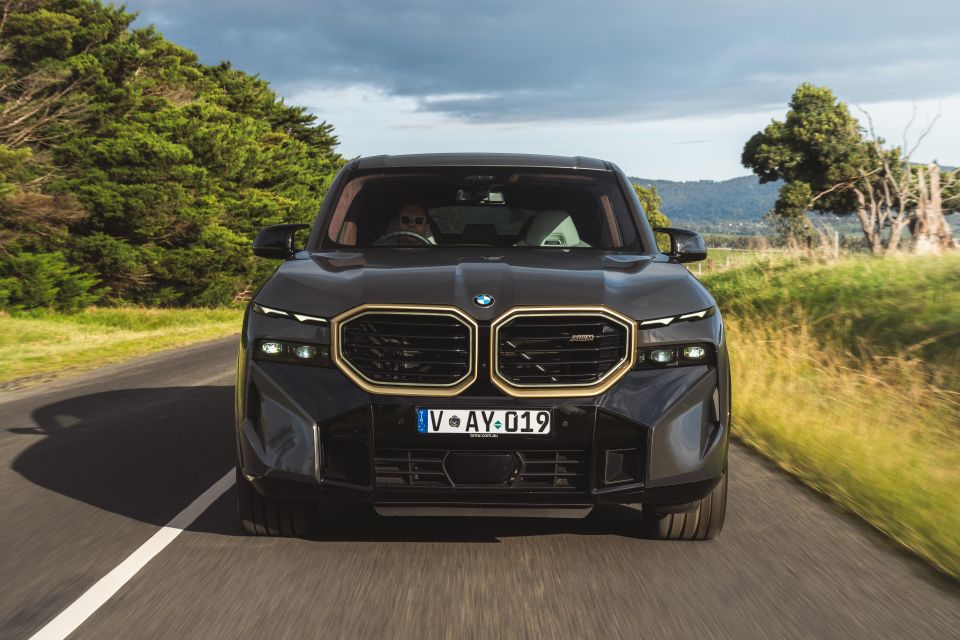
Along with the suspension, steering, transmission, engine, and all-wheel drive system, the XM allows you to fiddle with the hybrid system and regenerative braking as well. It’s overwhelming at first, and our time behind the wheel wasn’t quite long enough to explore the full range of what it can do.
In its most relaxed mode, the XM feels like an electric car. It defaults to a hybrid mode which leans hard on the electric motor below 140km/h, and unless you demand peak performance it’s unlikely most trips to work will need the 4.4-litre V8 at all.
Save for some space-age electric car sounds, there’s none of the fire and brimstone that has characterised BMW M since its inception.
There is some harshness to the ride, though. Our tester was on 22-inch wheels, not the 23s that are a no-cost option, but at low speed it really slaps, crashes, and bangs over rough roads. For a big SUV focused on blending performance with luxury, the ride isn’t particularly luxurious.
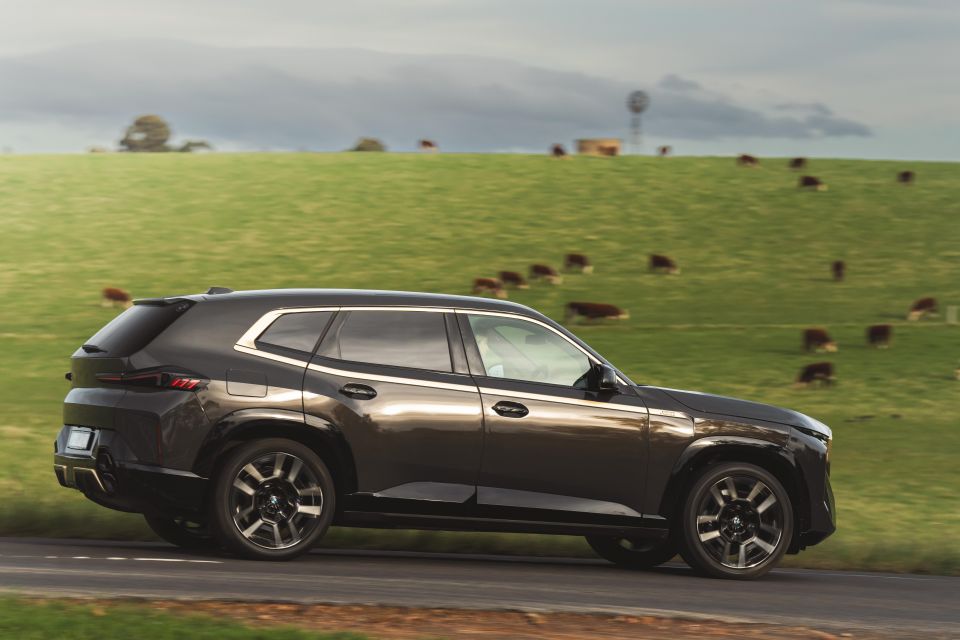
As for what happens when you put your foot down? If the car is in its normal hybrid drive mode, it pauses for a moment while the electric motor, transmission, and turbocharged V8 engine have a conversation about how best to deliver their thrust, and then smashes you in the back and drop kicks you down the road.
If the pause is slightly disconcerting, the way this 2700kg SUV accelerates is properly alarming. It’s way faster than it has any right to be, pulling hard from low in the rev range and ripping through to the redline harder than a turbocharged, electrically-aided engine has the right to.
Even with electric assistance, the petrol V8 in the XM sounds angry as well. Rather than the bassy wobble of an AMG, there’s a harsher motorsports edge to BMW’s raciest V8.
When you’re in the mood to get racy, the XM is capable of getting a real move on. The combination of rear-wheel steer, active anti-roll, and clever active all-wheel drive – not to mention the monstrous 275-section rolling stock – means it turns in confidently and sticks determinedly on tight roads.
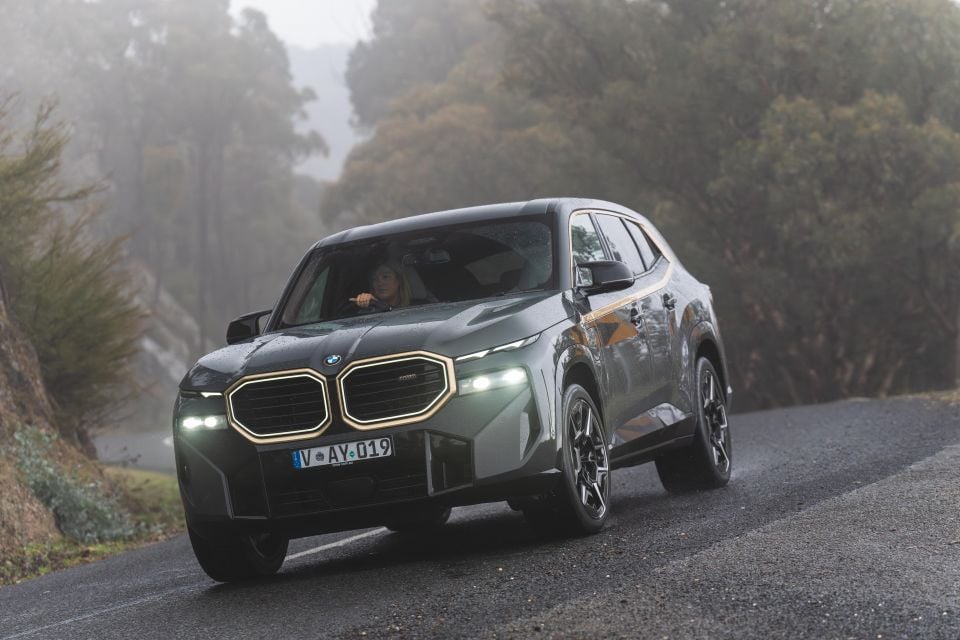
It’s deeply impressive how hard you can push it, although there’s no escaping the car’s size when the roads get tight.
There’s also no getting away from the ride. No matter how you have the suspension set up, from Comfort to Sport Plus, the way the XM thunders into potholes and pockmarked bits of tarmac undermines the experience. It’s always too firm.
There’s not a huge amount of feedback through the controls. The steering is direct but not what you’d call particularly chatty, and the plug-in hybrid system delivers near-instant response from so low in the rev range you can be a gear or two lower than you’d expect – but in its more aggressive modes, that response is so sharp it can be hard to modulate.
You can hustle it hard but between the complicated drivetrain, the sheer size of it, and how damn fast it is for public roads, it doesn’t necessarily encourage you to do that in the way an M3 Touring, or even an X5 M does.
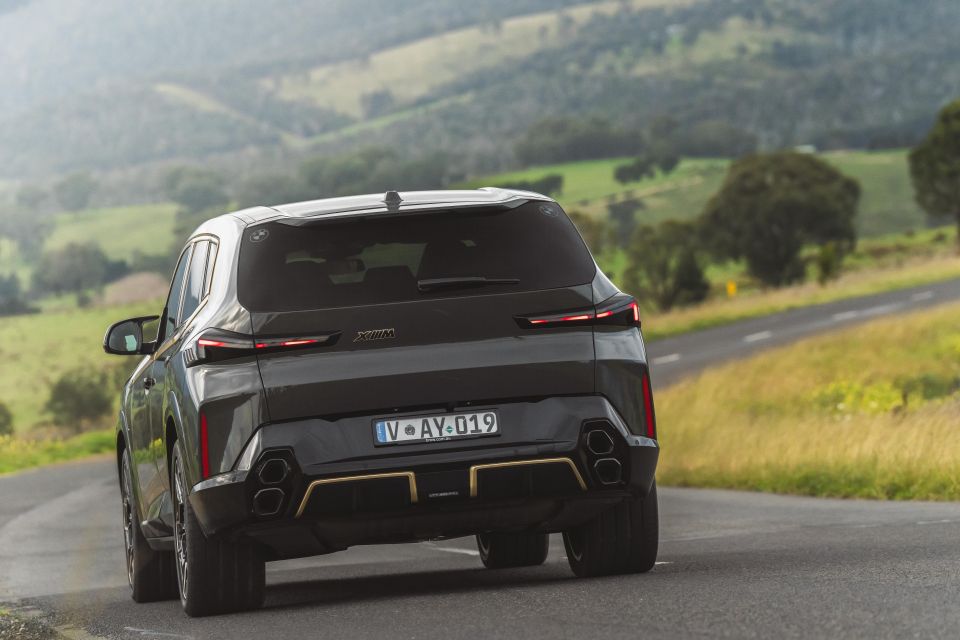
Where expert car reviews meet expert car buying – CarExpert gives you trusted advice, personalised service and real savings on your next new car.
That would be easy to swallow if it was a refined cruiser, but the ride isn’t the only chink in its armour. There’s quite a lot of road noise from those monstrous tyres at 100km/h on less-than-perfect Aussie highways, and the nose determinedly hunts out cambers at speed.
It means the car never feels particularly settled, with the steering wheel constantly tugging in your hands. In a purebred sports car that’s a compromise worth making; in a large luxury SUV designed to also be a sports car it’s harder to swallow.
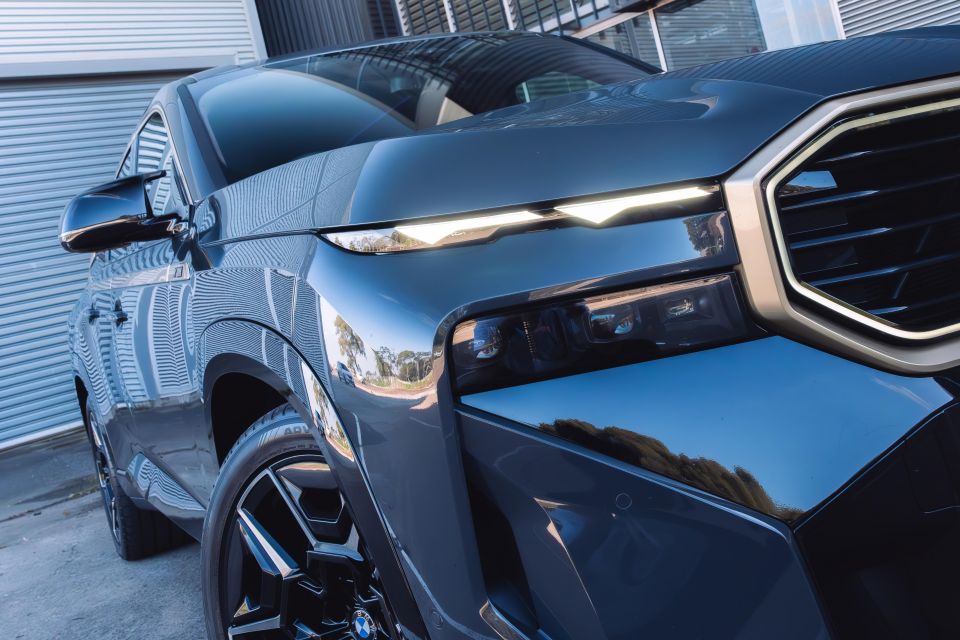
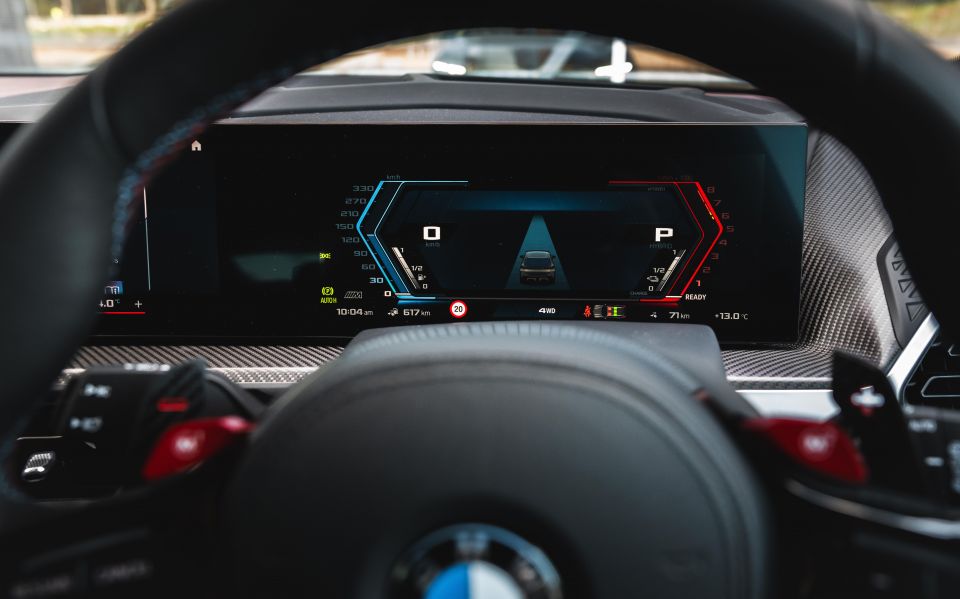
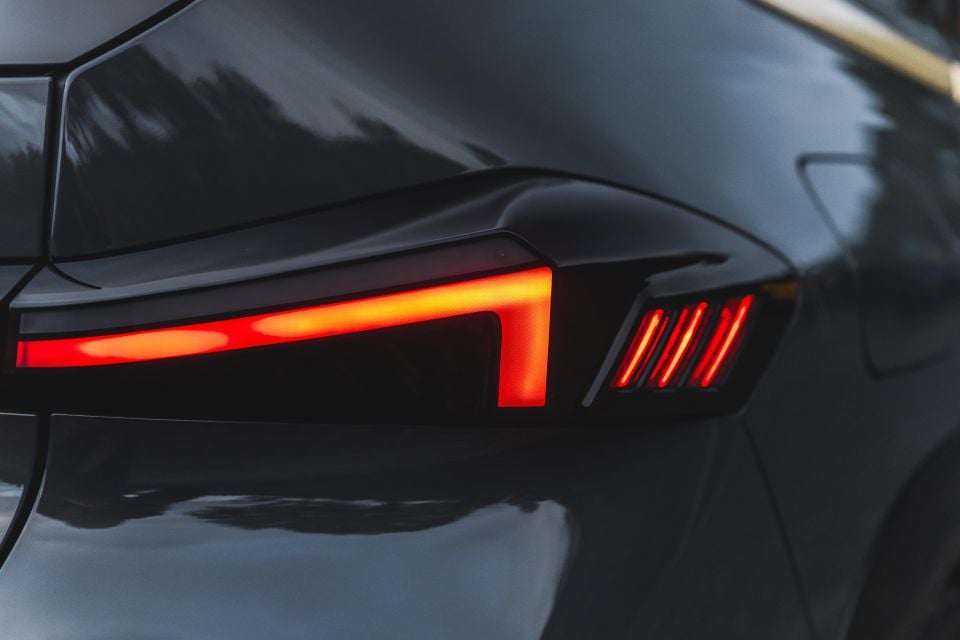

XM highlights:
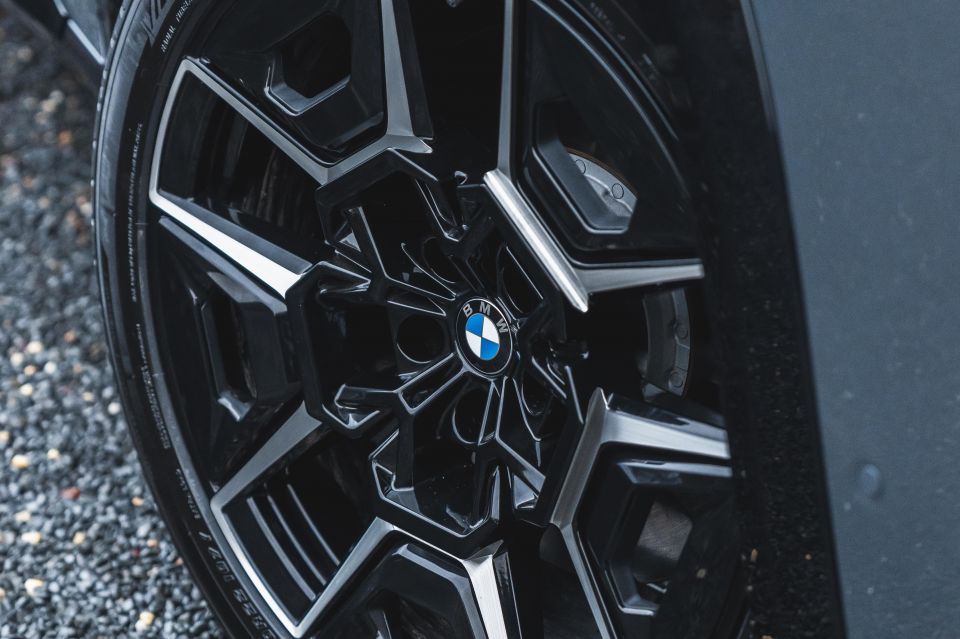

23-inch alloy wheels and M High Gloss Shadow Line exterior trim are no-cost options.
The BMW XM has yet to be tested by ANCAP or Euro NCAP.
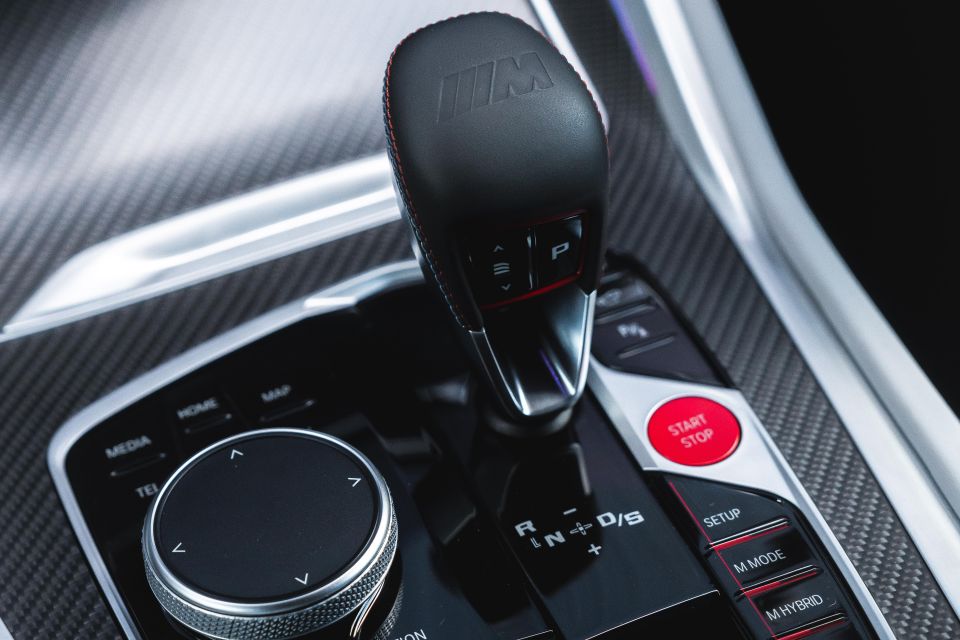
Standard safety equipment includes:
All BMWs sold in Australia are backed by a five-year, unlimited-kilometre warranty.
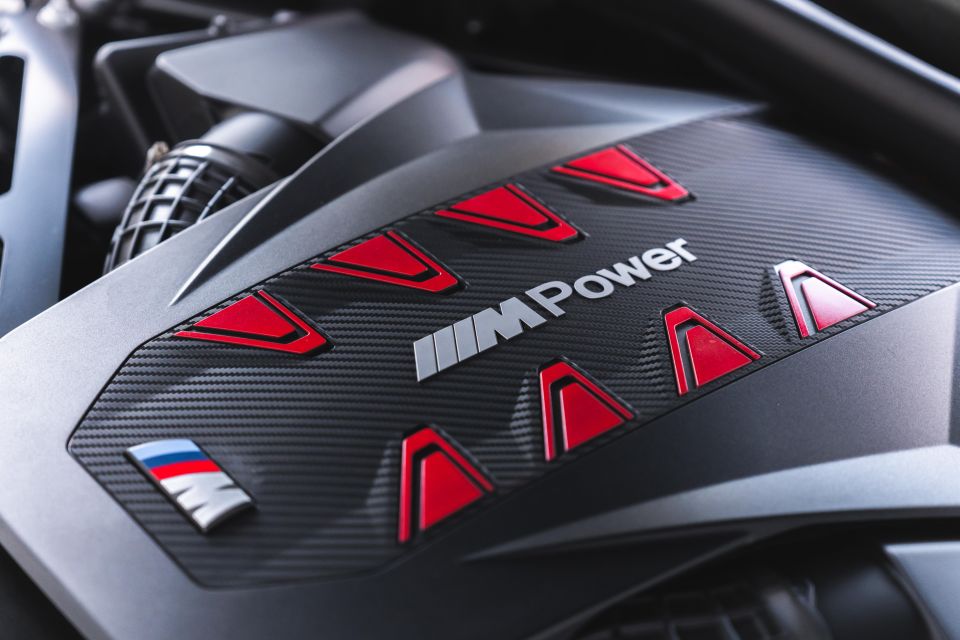
BMW will include a five-year BMW Service Inclusive package with the XM.
The XM creates more questions the answers.
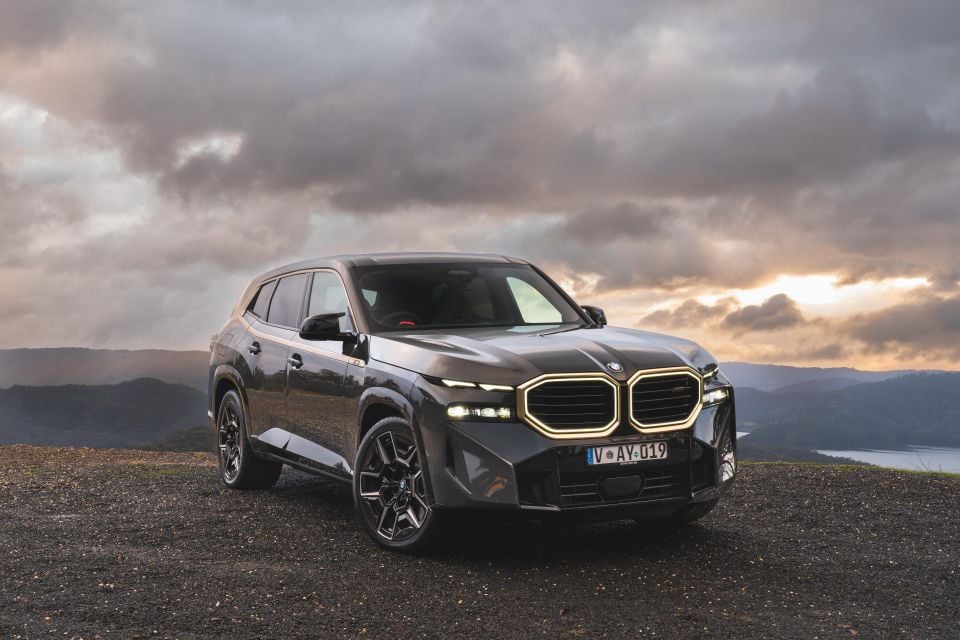
It feels a bit lost, especially when you consider how talented the broader M range is – it’s a rare miss.
What does it do well? It’s faster than it has any right to be, the interior is meaningfully more luxurious than what’s on offer in an X5, and there’s no doubt it’s provocative. It’s hard to call a $300,000 SUV good value, but relative to an Urus or Bentayga it does offer a lot for the cash.
But it’s not as fast as a less expensive X5 M Competition or iX M60 in straight line, not as comfortable as an X7 on the highway, not as bespoke or special as an Urus, and not as classically cosseting as a Bentayga.
Why buy one? It certainly stands out, and there’s an early-adopter appeal given it’s the first M-only car since the M1. If you want more substance to match the “style” though, there are better options in the BMW M line-up.

Click the images for the full gallery
MORE: Everything BMW XM
Where expert car reviews meet expert car buying – CarExpert gives you trusted advice, personalised service and real savings on your next new car.
Scott Collie is an automotive journalist based in Melbourne, Australia. Scott studied journalism at RMIT University and, after a lifelong obsession with everything automotive, started covering the car industry shortly afterwards. He has a passion for travel, and is an avid Melbourne Demons supporter.


Matt Campbell
7 Hours Ago


Max Davies
23 Hours Ago


William Stopford
23 Hours Ago


Derek Fung
24 Hours Ago


Max Davies
1 Day Ago


William Stopford
2 Days Ago